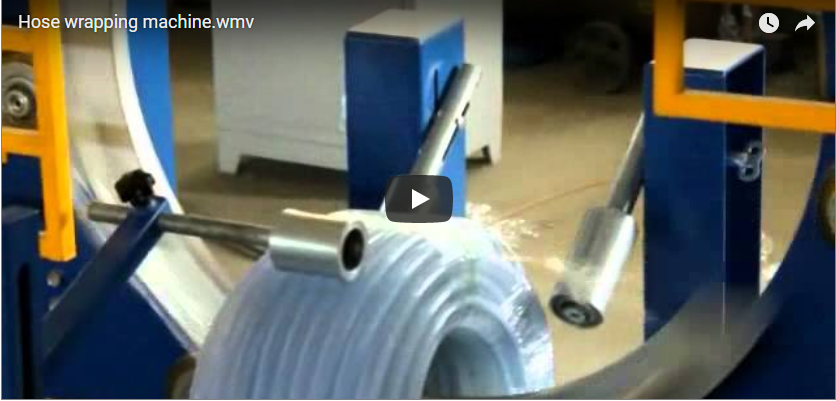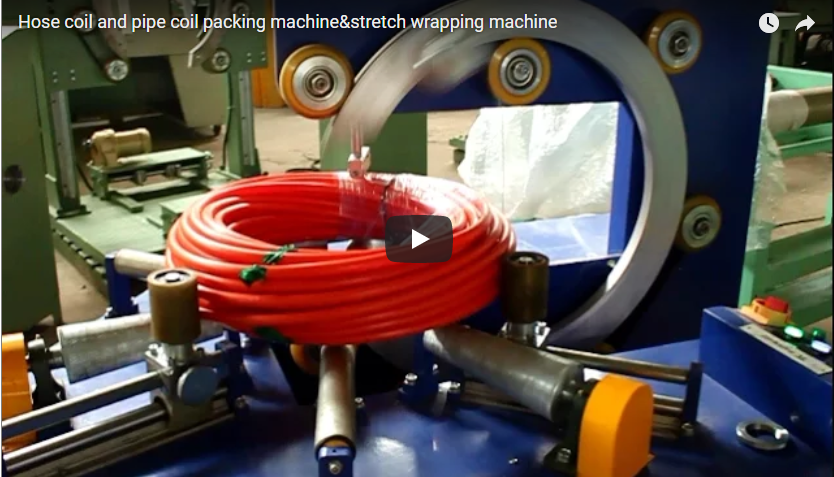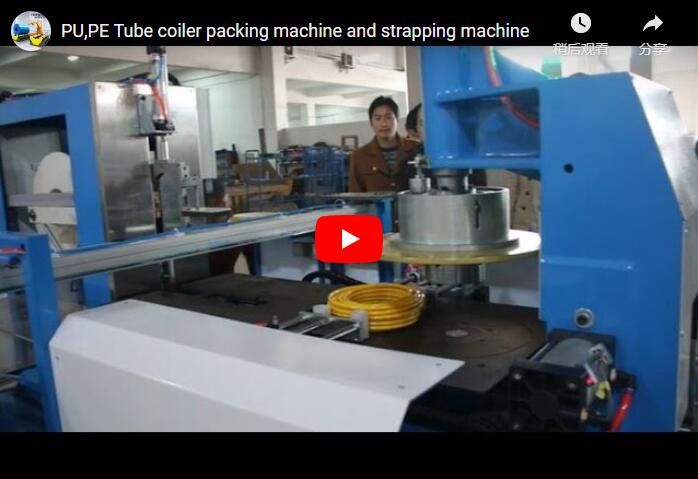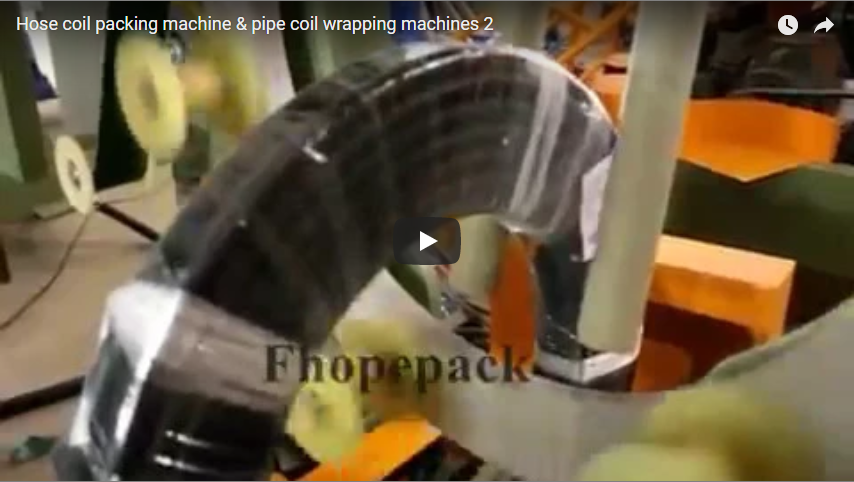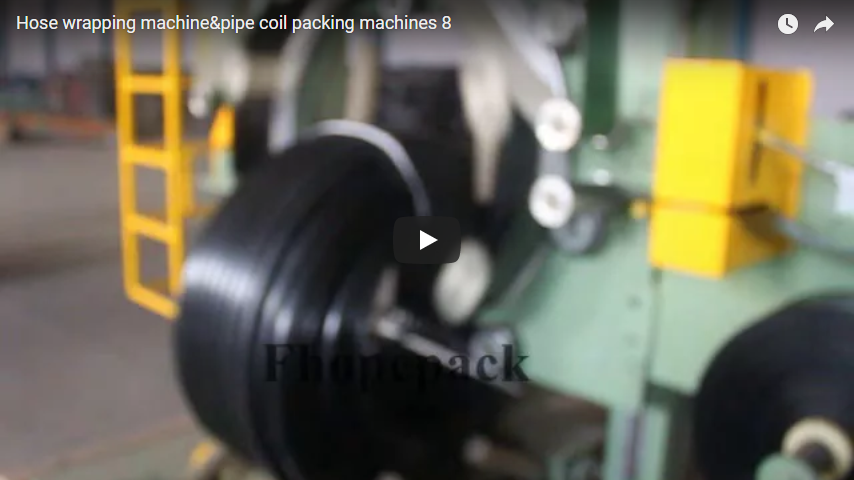Technical Guide: Automatic Horizontal Rubber Hose Wrapping Machines
Proper packaging is crucial in the industrial distribution of rubber hoses to prevent damage during transit and storage, ensuring product integrity upon arrival. Automatic horizontal rubber hose wrapping machines, specifically orbital wrappers, offer an efficient and reliable solution for applying protective layers like stretch film. This guide delves into the technical aspects, operational benefits, and practical considerations of these machines.
1. The Horizontal Wrapping Process Explained
Horizontal orbital wrappers are designed to package elongated or coiled products like rubber hoses effectively. The process generally follows these steps:
- Infeed: Hose coils are typically fed onto an input conveyor system, either manually or automatically integrated from a preceding production stage.
- Positioning: Sensors detect the hose coil, and the conveyor positions it correctly within the wrapping ring area. Advanced systems may include automatic centering mechanisms.
- Wrapping Cycle: A rotating ring dispenses packaging material (commonly LLDPE stretch film) orbitally around the hose coil as it moves horizontally through the ring. The overlap of the film can usually be adjusted for different levels of protection.
- Film Clamping & Cutting: Once the wrapping is complete, an automated system clamps the film tail, cuts it, and often secures it against the coil (e.g., via heat sealing or wiping).
- Outfeed: The wrapped hose coil exits the machine via an output conveyor, ready for palletizing or direct shipping. Some systems incorporate automatic unloading or stacking features.

2. Key Technical Parameters
When evaluating or specifying a horizontal hose wrapping machine, consider these technical details:
- Hose Coil Dimensions:
- Outer Diameter (OD) Range: e.g., 500mm - 1200mm
- Inner Diameter (ID) Range: e.g., 300mm - 800mm
- Width/Height Range: e.g., 100mm - 500mm
- Wrapping Material:
- Type: LLDPE Stretch Film, VCI Film, Crepe Paper, HDPE Woven Tape
- Roll Width: e.g., 100mm - 250mm
- Roll OD/ID: Standard industry sizes (e.g., 76mm ID core)
- Machine Performance:
- Ring Speed (Max RPM): e.g., 60 - 120 RPM (influences throughput)
- Conveyor Speed: Adjustable, e.g., 3 - 15 m/min
- Film Overlap Rate: Adjustable, typically 10% - 90%
- Control System:
- PLC (Programmable Logic Controller) for operational logic.
- HMI (Human Machine Interface) touchscreen for parameter setting and diagnostics.
- Power Requirements: Voltage/Frequency/Phase (e.g., 480V/60Hz/3Ph) and Power Consumption (kW).
- Optional Features:
- Top press roller for unstable coils.
- Automatic labeling system integration.
- Safety features (light curtains, fencing).
- Integration modules for existing production lines.
3. Operational Advantages and Efficiency Gains
Implementing an automatic horizontal wrapping machine yields significant benefits:
- Enhanced Product Protection: Provides a tight, secure wrap safeguarding hoses from moisture, dust, dirt, and abrasion during handling and shipping. Reduces risk of costly damage and returns.
- Improved Load Stability: Properly wrapped coils are more stable, facilitating safer handling, stacking, and transportation.
- Reduced Labor Costs: Automation significantly minimizes manual handling requirements for wrapping, cutting, and securing film, freeing up personnel for higher-value tasks. Lowers potential for repetitive strain injuries.
- Increased Throughput: Automated wrapping cycles are considerably faster and more consistent than manual methods, boosting overall packaging line productivity.
- Material Savings: Precise control over film tension and overlap optimizes material consumption compared to manual wrapping.
- Professional Appearance: Consistently wrapped products present a more professional image to end customers.
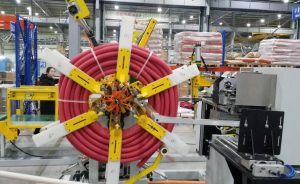
4. Implementation Insights and Best Practices
Drawing from field experience, successful implementation involves:
- Material Selection: Choose the right type and thickness of stretch film based on hose weight, storage conditions, and required puncture resistance. Consult film supplier specifications (Example reference: Stretch Film Properties Guide).
- Tension Settings: Adjust film tension carefully. Too loose compromises stability; too tight could damage softer hoses or waste material. Parameter settings on the HMI are key.
- Line Integration: Plan the physical layout and electrical/data connections if integrating the wrapper into a larger automated line. Ensure smooth transitions between conveyors.
- Operator Training: Train staff on machine operation, HMI navigation, film roll changes, basic troubleshooting, and safety procedures.
- Preventive Maintenance: Adhere to the manufacturer's recommended maintenance schedule (lubrication, sensor checks, wear part inspection) to ensure long-term reliability and performance. Referencing maintenance guides like those from Packaging Machinery Manufacturers Institute (PMMI) can be helpful.
5. Role in the Industrial Supply Chain
Automatic hose wrapping machines are a vital component in optimizing the logistics of rubber hose distribution. By ensuring secure and protected packaging close to the point of manufacture, they contribute to:
- Reduced Transit Damage: Minimizing losses and insurance claims.
- Improved Warehouse Management: Stable, uniformly wrapped coils are easier to store and retrieve.
- Enhanced Safety: Less manual handling reduces workplace accidents.
- Meeting Customer Requirements: Fulfilling packaging specifications often mandated by large industrial consumers or distributors.
In conclusion, automatic horizontal rubber hose wrapping machines provide a technically sound and operationally efficient method for packaging hose coils. By understanding their function, key parameters, and operational best practices, companies involved in hose manufacturing and distribution can significantly enhance product protection, logistical efficiency, and overall cost-effectiveness.
For more details on specific machine configurations:
Hose Packaging Machine Solutions

